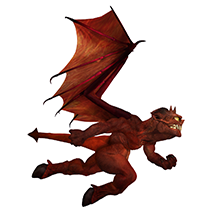The following idea is based on the method taught by the Special Operations Executive (SOE) to agents during the Second World War. I’ve made a few changes to make it a little more modern and to add a few missing features, like hair. It was intended to allow an agent to describe someone to an agent so they can recognise them from the description. It wasn’t an exact or scientific method like those used by police or the Bertillon system. Instead it aimed to allow the quick recognition of someone in a crowd by eliminating other people.
Features to Always Describe
| Feature | Suggestions |
|---|---|
| Gender | Male or Female |
| Apparent Age | Either an age range or a simple description such as child, teenager, adult, middle aged or old |
| Height | Average, Short, Tall, Very Tall, Very Short |
| Build | Slight, Large, Stocky or Medium |
| Ethnicity | White, Asian, Black, Chinese |
| Distinguishing feature | Hunchback, cross-eyes, missing ear, missing eye, missing limb, missing finger |
Features to Describe if Distinctive
| Feature | Suggestions |
|---|---|
| Head | Small, Large, Round, Long, High Crown, Flat at the Back, Bulging at the Back |
| Face | Found, Chubby, Broad, Long or Cadaverous, Narrow, Thin, Oval |
| Complexion | Fair, Dark, Black, Brown, Yellow, Sallow, Sunburnt, Red, Purple, Freckled, Fresh |
| Forehead | Receding, Bulge or Prominent, Broad, High or Low |
| Head Hair | Colour, Style, Bald, Neat or Untidy, Long or Short |
| Eyebrows | Arched, Straight or Oblique, Thick or Bushy, Meeting, Lack of, Thin, Plucked, Sandy, Red, Black, Grey, White. Colour should only be mentioned if different from colour of hair of head |
| Facial Hair | Stubble, Sideburns, Beard, Moustache, Style, Neat or Untidy, Colour should only be mentioned if different from colour of hair of head |
| Eyes | Colour rarely described because hard to use for identification.Size, Shape and Position. Large, Almond, Sunken, Protuberant |
| Ears | Four points: Size – Large or Small. Fold – Pronounced or lack of. Lobe – attached, unattached or lack of. Sticking out of head or pressed close into the head |
| Nose | Straight, Convex or Concave, Base Elevated or Depressed. Nose long in proportion to face. Very wide nostrils. |
| Cheeks | Prominent cheekbones, fat or flabby, jowl, hollow, dimpled |
| Mouth | Large or small |
| Teeth | Prominent, false, missing, discoloured, white, gold |
| Lips | Length of upper lip, thickness, overhanging upper lip, pendent or protruding lower lip |
| Chin | Receding, protruding, small or pointed, large or square, double, dimpled |
| Neck | Long or short, thin or thick, Adams apple |
| Shoulders | Broad or drooping |
| Arms | Long or short in proportion to body |
| Hands | Artistic or Worker, Large or Small, Nail Long or Short, |
| Legs | Long or short, bowed or knock kneed, no ankles (women) |
| Gait | Slow or Quick Stride, Long or Short, Pigeon Toed or Splayed feet, Limp |
| Bearing | Stooping or Straight |
| Voice | Soft or Loud, Accent |
| Mannerism | Any peculiar mannerism or habit should be described |
| Distinguishing Marks and Piercing | Any Tattoos, Birth Marks, Scars or Piercing which are visible |
| Scent | Clean, Cigarette Smoke, Perfume or Cologne, |
